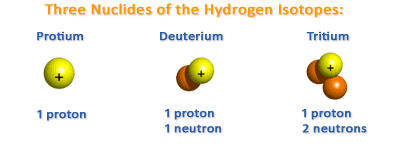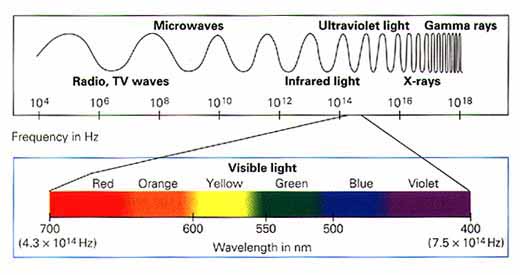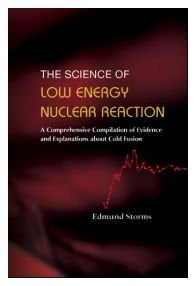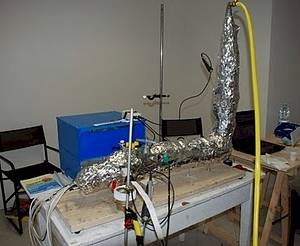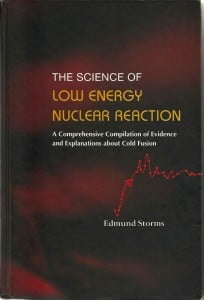“Cold fusion is no longer a maybe-possibly-probably not-junk- science. It is now real and it is emerging into the marketplace and we will see the first 1 MW power plant coming in mid-October of this year which will be producing 300,000 units per year. And that’s just starting. And so this is a great opportunity for people to get involved in a technology that can completely revolutionize the planet energy wise and get us off our dependence on fossil fuels.” –Sterling Allan
James Martinez Live had a surprise guest on last Tuesday, April 26 on his Cash-Flow show, when Sterling Allan swooped in for a visit. He is the man behind Pure Energy Systems, the yellow pages of new energy researchers. Allan has also formed the New Energy Congress, whose purpose is “to provide quorum review of leading technology claims, to assess viability and prioritize; then facilitate advancement”. His PESWiki allows for contribution by members of the new energy community.
Pure Energy Systems has a “Top Five Exotic Free Energy Technologies” listing of breakthrough technologies that got the attention of Gerald Celente, and made it into the Trends Journal 2011. Andrea A. Rossi’s Cold Fusion Generator is number one.
In the effort to move minds into action, and instigate the public to demand cold fusion, James Martinez began by stating flatly “It’s really up to you, the public to…vote for your children’s future … and liberate yourself.” This is aligned with Sterling Allan’s plea to “hound your representatives and tell them there are solutions. Stop saying they are not [any]!” Their hour-long conversation exposed what solutions to our energy crisis look like.
Listen to the full hour and download .mp3 on our Audio page.
A few highlights are transcribed below. In one exchange, James asked Sterling about the nature of implementing new technology into the current paradigm, and he lamented the bureaucracy that gets in the way of both scientists and students who want to study cold fusion. Sterling responded:
“It really is amazing to see how the role of politics in science can really stifle the development of science. Scientists, we would like to think, are really open-minded; something new comes along, they’re going to embrace it, they’re going to be excited about it, but in practice , the old Not-Invented-Here syndrome gets really really tight. If the scientist didn’t come up with it, if it wasn’t first published in some scientific journal, gone through the rigamaroll that they’d like it to go through, boy …. and that’s what we specialize in: when something makes the professor’s eyebrows raise, that’s when we start getting interested.”
He also recited a proverb posted on his website:
“He who is one-step ahead is a genius.
He who is two-steps ahead is a crackpot.”
When Sterling presented that to an audience in Estonia, somebody in the audience quipped, “He who is one-step behind, is the government.”
Then he added academia to the that same equation with “academia is so bureaucratic now, they are as bad as the government in stifling innovation.”
Listeners to the archive will enjoy the strange protracted silence, right before James comes back and relates his experience with a high school student who wanted to be a cold fusion scientist and James was setting up a cold fusion scientist to go and visit him at school. However, the young man’s school thwarted the effort. James then reminded us, “Learning institutions are supposed to be open-forums for discussion.”
Two years ago, prompted by the Navy’s research which was “basically saying cold fusion was real”, Sterling started a collection of positive reports on cold fusion that were printed in mainstream news and scientific journals around the world, “all basically announcing that cold fusion should be taken seriously.” [See this bit of presentation here on Youtube.]
“You think that would mark the turning point in the scientific world, that now we would start taking cold fusion seriously. But no, that wasn’t the case.
To this day, even with this Rossi cold fusion happening, if you go to academia and you say cold fusion with a straight face, you’ll be laughed at as a crackpot; it’s still junk science, because of politics, not science.”
James responded with some practical advice for young people in these lean financial times. “Forget the schools. Learn it yourself.”
The conversation inevitably touched on the lack of funding in cold fusion research. Sterling Allan responded:
“I learned a long time ago to not even glance at the government for any kind of leadership when it comes to this stuff. I go to the private sector. It’s the private sector that you get the receptive ears and you get the people that are excited. You get a phone call from somebody from NASA every once in a while that’s interested. You’ll get a cloaked email from somebody from some academic institution that’s kind of contacting you on the side, or on the sly so to speak.
But there are a lot of people that are supportive of these technologies and they are moving forward. The momentum is on our side.
We are moving into a state where we will lose our dependence on a central authority and we will gain our independence energy-wise, so that each house will have its own power device, each vehicle will have it’s own power generator so you won’t have to stop for fuel, it’s pulling energy from the inexhaustible sources all around us.”
James remarked that this technology of the gentle green giant nuclear power from water will “liberate humanity from the dependency on these oil companies and BP spilling hundreds of millions of gallons and getting away with…it’s an end to that.”
Later, Sterling echoed the responsibility of the current energy corporations in the current lack of vision in our energy technology:
“We need to shame the energy industry in the United States, and probably elsewhere in the world, not as bad in Europe as it is in the United States. The United States is almost the worst case scenario when it comes to energy. They are supporting the wrong horse and suppressing the right horses.
If you look at industry in general, the amount of money industry spends from their budget on research and development is 3.1%.
On the other hand, industries like communications, they spend 26% on research and development, software spends 15%, pharmaceuticals is like 14%.”
He then turned the tables and asked James if he knew what percentage of their budget the energy industry spends on research and development. A tiny 0.3% was the answer!
The entire energy industry in the US spends 0.3% of their budget on research and development — a shockingly low number.
“An order of magnitude lower than the industry average! Energy is so important…..we have to start spending our research and development money on new ideas. There are plenty of places to put that money, I promise you that,” Sterling said.
At the start of the second half of the show, James announced he had spoken with Andrea Rossi earlier in the day about an interview, but Mr. Rossi declined at this time, and all the way through October. He’s too busy working on his Energy Catalyzer (E-Cat) with his company Defkalion Green Technologies.
“They will be building 300 smaller, officially-rated 2.5 Kw reactors”. The reactor chamber is 50 cubic centimeters — 3.2 cubic inches. Then he characterized Andrea Rossi’s discovery as finding the catalyst to the nickel-hydrogen reaction, or the additive to the nickel powder. (In subsequent correspondence, Sterling (via his associate Hank Mills) added that: Andrea Rossi replaced the nickel rods or wires used in other Ni-H Cold Fusion experiments with nano-nickel powder, which greatly enhanced the surface area of the nickel. More surface area resulted in more sites at which the hydrogen could react. By combining this nano-nickel powder with two undisclosed elements (which he calls the catalyst) the fusion reaction was further enhanced.)
Addressing the cost issue for the average home user, Sterling noted that “a 2.5 Kw solar system would cover both roofs”. And Rossi’s device might cost “somewhere in the low thousands.”
“But an easier number people can relate to is cents per kilowatt-hour. Where I live [in Utah, US] we probably have the cheapest at 4 cents a Kwh wholesale”, he said. “Rossi cold fusion will deliver for 1 cent per Kw, one-quarter of the price“. He did add that the first applications would be in creating heating systems, and a turbine added to make the electricity would initially add to the cost.
He reminded listeners that though cold fusion is a nuclear process, there is no radioactive materials used, and there is no radioactive waste to get rid of. Mr. Sterling continued the good news throughout the interview.
“The coming year is going to be phenomenal in terms of the emergence of breakthrough energy technologies, clean energy technologies, affordable, portable…there’s a lot of stuff breaking out, this is one of them. This (cold fusion) is number one in our top five on our homepage of http://freeenergynews.com. This is our top one, but it is not the only one that’s to emerge this year. Some are expected to emerge even before this one.
This technology, from what I understand, is really quite simple to implement. It is something that could be licensed by a large number of manufacturers around the world and deployed very rapidly to create jobs and infrastructure that goes along with those jobs and all the various iterations of this. There’s going to be a lot of research and development that will need to go into making this stable for transportation, for example.
When we talk about nuclear, we think of Fukushima and we think of disaster, and we think ‘Oh my gosh, I don’t want that in my yard, let alone my garage’, but this is very different even though this is a nuclear reaction, if this was suddenly … a catastrophe happened, let’s say you were hit by a meteorite in your garage, and it smashed right into your cold fusion reactor, nothing would happen.
You don’t have radioactive elements leaking into the environment, you don’t have some big explosion taking place, it doesn’t runaway, it just stops. That’s all…
…Alternative energy can be our savior economically if we get on this fast enough, and the sooner we get on this, the more of a remedy it will be … and Gerald Celente actually predicted in his 2011 Trends Journal in January that 2011 would see the emergence, and he specifically mentioned Rossi’s cold fusion technology, that there’s going to be a breakthrough energy technology to come along that will be as big as the invention of the wheel or the discovery of fire in terms of its transformation capability for the human race.
Think of it this way. When people are able to do what they’re good at and what they want to do, they are 7 times more productive than when they’re working for somebody else doing something they hate, especially if they are slaves to a system, and they’re on fluoride, and they’re not thinking straight. When they become independent and they think for themselves and they’re doing something they love, they are 7 times more productive.
So when people are given power, a device that can power their house in the garage, and they’re no longer dependent on a central authority, and they’re able to pursue their dreams, we’re going to see prosperity like never before. We will see an end to war. We will see an end to poverty. We will see an end to so many of the problems that plague this planet. And that’s why these bastards don’t want to see free energy emerge because it empowers the individual. It’s power to the people…
….It’s an act of revolution to support free energy, and today’s generation that does so will be the heroes of the coming generation.”
Supporting Links:
Sterling Allan Pure Energy Systems
Top Five Exotic Energy Technologies
Intentional community project: www.safehavenvillages.org

